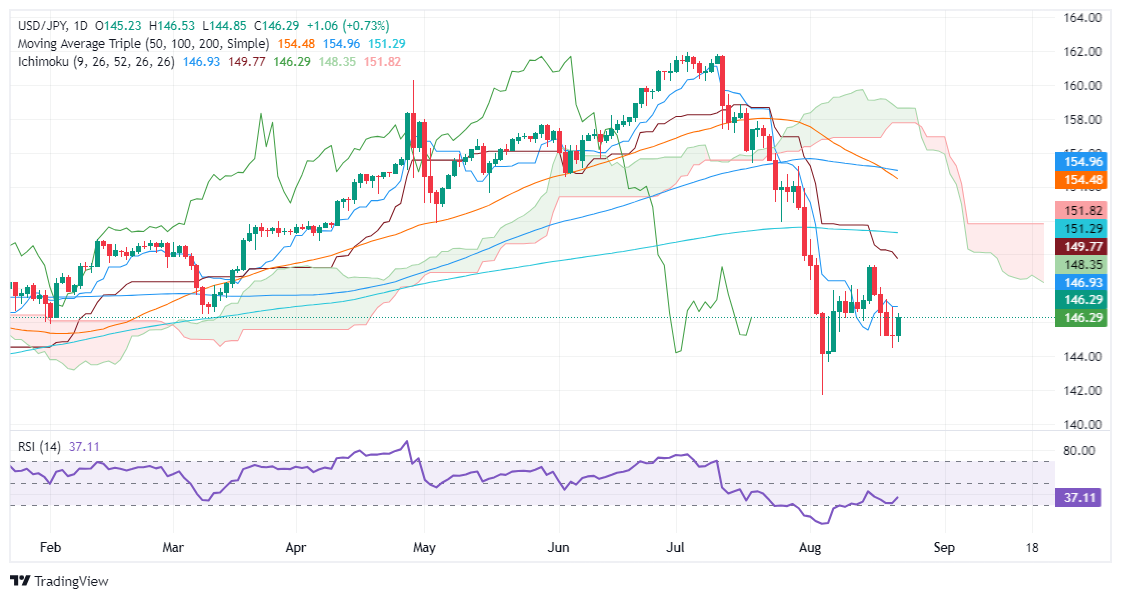USD/JPY Price Forecast: Recovers 146.00 but remains bearish

- USD/JPY gains momentum but struggles to clear Wednesday’s high of 146.90, keeping the pair range-bound.
- A break above 146.92 could lead to resistance at 147.00 and the August 15 high of 149.39, with 150.00 as a key target.
- If sellers push the pair below 144.45, the downtrend may continue, with support at 141.69.
The USD/JPY strengthened late during Thursday’s North American session, following choppy price action on Wednesday that saw the pair hover around 145.20. The push higher in US Treasury bond yields boosted the pair, which gains over 0.66% or 95 pips and trades at 146.24.
USD/JPY Price Forecast: Technical outlook
After printing a long-legged doji, the USD/JPY aims higher yet is shy of clearing Wednesday’s high of 146.90, keeping the pair range bound. Momentum favors sellers, with the Relative Strength Index (RSI) standing bearish. However, buyers are gathering momentum as the RSI aims up.
For a bullish continuation, the USD/JPY needs to crack the Tenkan-Sen at 146.92. Once cleared, the next resistance would be 147.00, followed by the latest cycle high reached on August 15 at 149.39. If those levels are broken, buyers could re-test the 150.00 figure.
On the other hand, the ongoing downtrend could resume once sellers drag prices below the August 21 low of 144.45. In that outcome, the USD/JPY could dive toward the August 5 swing low of 141.69.
USD/JPY Price Action – Daily Chart
Japanese Yen FAQs
The Japanese Yen (JPY) is one of the world’s most traded currencies. Its value is broadly determined by the performance of the Japanese economy, but more specifically by the Bank of Japan’s policy, the differential between Japanese and US bond yields, or risk sentiment among traders, among other factors.
One of the Bank of Japan’s mandates is currency control, so its moves are key for the Yen. The BoJ has directly intervened in currency markets sometimes, generally to lower the value of the Yen, although it refrains from doing it often due to political concerns of its main trading partners. The current BoJ ultra-loose monetary policy, based on massive stimulus to the economy, has caused the Yen to depreciate against its main currency peers. This process has exacerbated more recently due to an increasing policy divergence between the Bank of Japan and other main central banks, which have opted to increase interest rates sharply to fight decades-high levels of inflation.
The BoJ’s stance of sticking to ultra-loose monetary policy has led to a widening policy divergence with other central banks, particularly with the US Federal Reserve. This supports a widening of the differential between the 10-year US and Japanese bonds, which favors the US Dollar against the Japanese Yen.
The Japanese Yen is often seen as a safe-haven investment. This means that in times of market stress, investors are more likely to put their money in the Japanese currency due to its supposed reliability and stability. Turbulent times are likely to strengthen the Yen’s value against other currencies seen as more risky to invest in.
